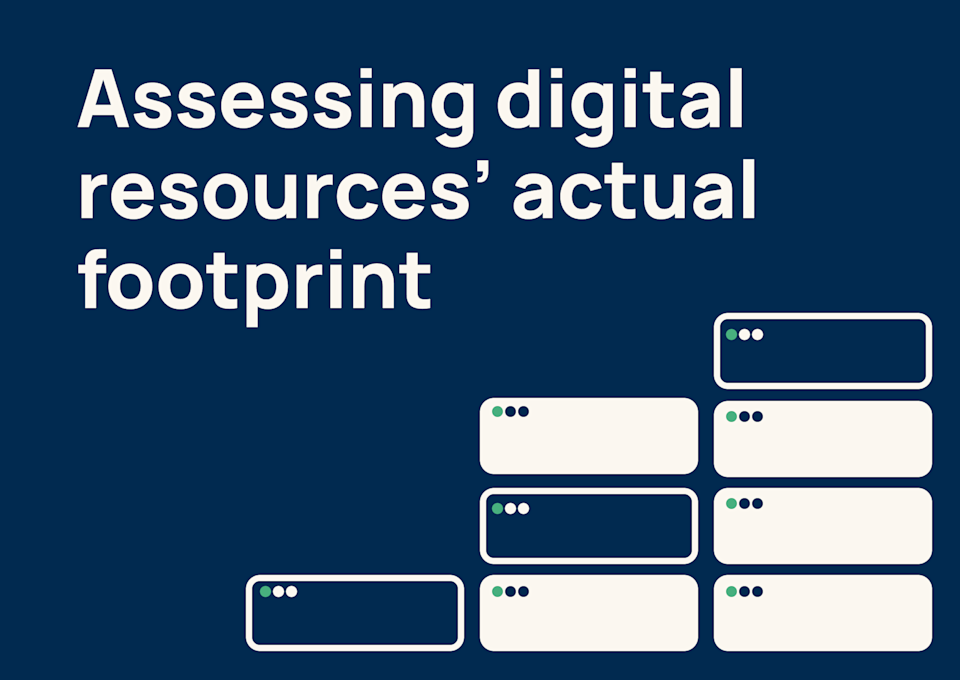Imagine if we could calculate the environmental impact of a digital product or service, simply by looking at how much CPU time, memory, storage, and network bandwidth it uses. And imagine we could do this in any environment - in the Cloud, in Kubernetes, Virtualized, or on Bare Metal servers.
Traditionally, environmental science posits that only physical products can have an environmental impact. While there is certainly nothing physical about software, it does require resources to operate. The generation of these resources - digital resource primitives, short digital resources - relies on physical infrastructure which has its own measurable environmental impact.
Servers and data centers as digital resource factories
Every server is essentially a digital resource factory and has a clear production capacity, for example, 128 gigabytes of memory or 2 terabytes of storage. Each server also has a measurable or rated power consumption along with a life cycle assessment or product passport. Lastly, we can quantify the environmental costs of physical infrastructure like data centers by measuring the carbon footprint of each individual server.
To date, this is particularly challenging in Cloud environments, where it’s not visible which server a cloud service or application is using. Likewise, there is a lack of transparency surrounding the environmental costs of physical data center infrastructure. In almost every virtualized environment, the information required to calculate the environmental impact is not accessible. So what do we do?
Using generalized values for commoditized digital infrastructure
It is difficult to make assumptions when there are vast variations in underlying infrastructure. But this is not the case with servers, as they have long been commoditized in terms of appearance and configurations. It is safe to say they almost all come from the same factory. The same is true for data center infrastructure: modern data centers almost all rely on the same standardized designs, and similar infrastructure components. In the absence of available measurements, we can use generalized values instead. This would also incentivize cloud infrastructure or hosting providers to provide correct, transparent information, especially if they are clearly outperforming the generalized values in terms of environmental impact.
Enabling healthy competition in both transparency and reduced environmental impact has never been more critical. In the short term, it is unrealistic to expect cloud providers or hosting companies to volunteer such information. Even if they do, it is unlikely that environmental impact information would be factual or accurate, as is currently the case with carbon reporting tools.
A testbed to verify generalized values
Still, generalized values do not materialize out of thin air; they need to be based on observable, actual measurements. This is why we created a fully monitored, soon-to-be public test bed and reference system - from physical power consumption to lifecycle costs of the server itself, all the way to building and data center equipment. The formulas we publish are verified and tested on this test bed. We will soon release all the necessary components to make your own testbed and the requisite calibration tools to adapt formulas to individualized infrastructure needs.
Setting the standard high
Most efforts aimed at quantifying the environmental impact of digital products focus purely on measuring energy consumption. While this is useful for improving the energy efficiency of an application, it does not reflect the total environmental impact as energy is only one impact indicator. In a life cycle assessment there are 26 distinct indicators, and making energy ‘green’ is outside of the scope of IT without relocating data centers or ramping up construction of wind and/or solar farms.
That is why our approach focuses on the entire life cycle of the software supply chain- servers, networks, data centers, etc... - providing metrics to the digital and IT communities and allowing them to reduce their total impact. In order to make sure that our approach sets the bar high for all actors in the digital ecosystem, LFCA and SDIA are pursuing the standardization of those formulas, both in Europe (via an EN Norm) as well as on the international stage (via ITU and ISO).
Next steps and launching the formulas
The SDIA has recently completed its test setup and is now working together with members of the LFCA community to verify that our measures are applicable in real-world scenarios and that the values hold up to scientific scrutiny. We are especially grateful in this regard to Jens Gröger at the Öko-Institute and Patricia Lago at Vrije Universiteit Amsterdam who helped review the measures.
If you want to stay connected you can join the free and public community for the digital environmental footprint here, sign up for an upcoming hackathon where we test the formulas in more applications, or subscribe to the LFCA newsletter.

